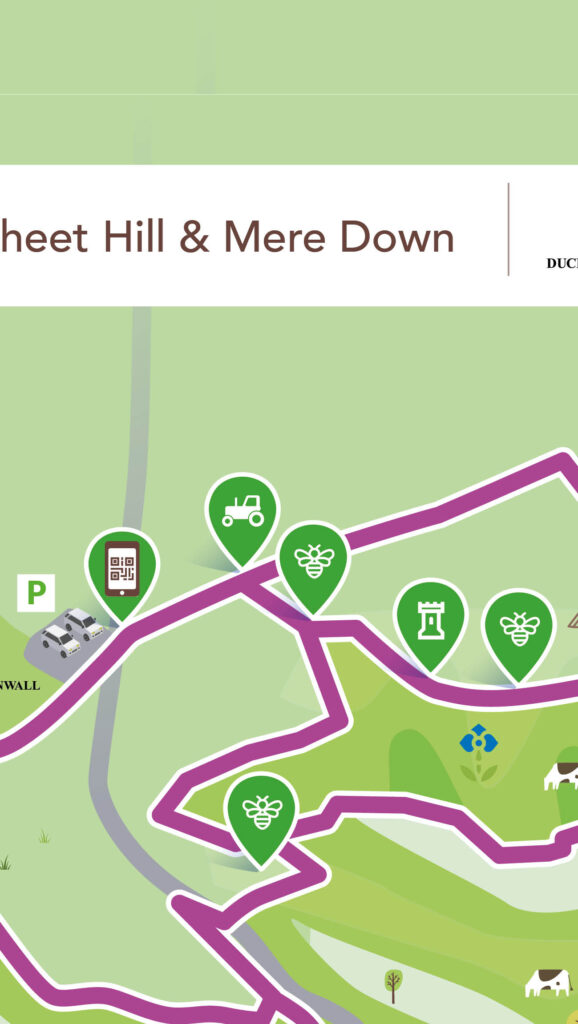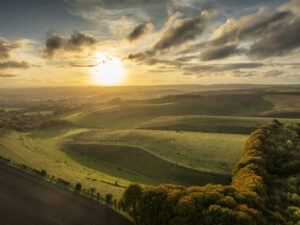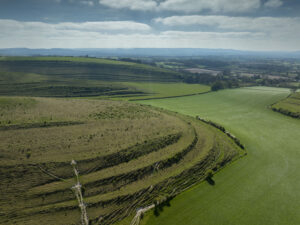
Chetcombe Farm
Chetcombe Farm has been farmed by the Hooper family for around 100 years and is currently managed by Clive and his son Kevin Hooper.

A view over Chetcombe Farm – photo credit: Charles Sainsbury-Plaice
Chetcombe Farm is situated within the Cranbourne Chase National Landscape (formerly called Area of Outstanding Natural Beauty).
The farm consists of permanent pasture which is grazed by Aberdeen Angus cattle, and arable land where crops such as winter wheat and malting barley are grown. Temporary grass and clover leys and stubble turnips have also been introduced into the rotation. The stubble turnips are grazed by sheep over winter which helps to improve soil health by adding nutrients back into the soil, thereby feeding the soil food web and providing nutrients to the next crop.
Since 2022, over two miles of native hedgerow has been planted on the farm, as well as multiple areas of woodland creation.
Nature
The farmers at Chetcombe Farm manage a large expanse of species rich chalk grassland. Some of the wildflowers found on the grassland include: Birds foot Trefoil, Devil’s Bit Scabious, Milkwort, Mouse ear hawkweed, Pignut, Salad Burnet, Small Scabious, Wild Thyme amongst many more.
There is a rich butterfly fauna on the farm. A survey carried out in 2020 identified that the grassland at Chetcombe Farm supports the Chalkhill Blue, Comma, Dinky Skipper, Green Hairstreak, Green-veined white, Grizzled Skipper, Holly Blue, Large Wall, Meadow Brown, Painted Lady, Peacock, Small Heath, Small Skipper, Small Tortishell and Wall to name a few.

Marsh-Fritillary-Photo by Liam-Lysaght
There are historic records of the Marsh Fritillary caterpillars here also. The Marsh Fritillary is threatened, not only in the UK but across Europe, and is, therefore, the object of much conservation effort.
Part of Chetcombe Farm was within a Countryside Stewardship Scheme in 2009 which involved restoration of chalk grassland. This was achieved by taking wildflower seed from nearby lynchets and spreading on former arable land. This has been a very successful restoration.
Historical features
Much of the landscape of Chetcombe Farm is under historic features known as Strip Lynchets. Strip lynchets are archaeological features found in agricultural landscapes. They are linear earthworks that consist of a series of parallel, stepped terraces on the slopes of hills or inclines.

Strip lynchets at Chetcombe – photo credit: Charles Sainsbury-Plaice
Countryside Code
Remember the Countryside Code
- Take your litter home – leave no trace of your visit.
- Please leave gates and property as you find them. Close the gate so as that livestock do not escape.
- Please do not block access to gateways or driveways when parking as the farmers looking after this landscape need 24/7 access.